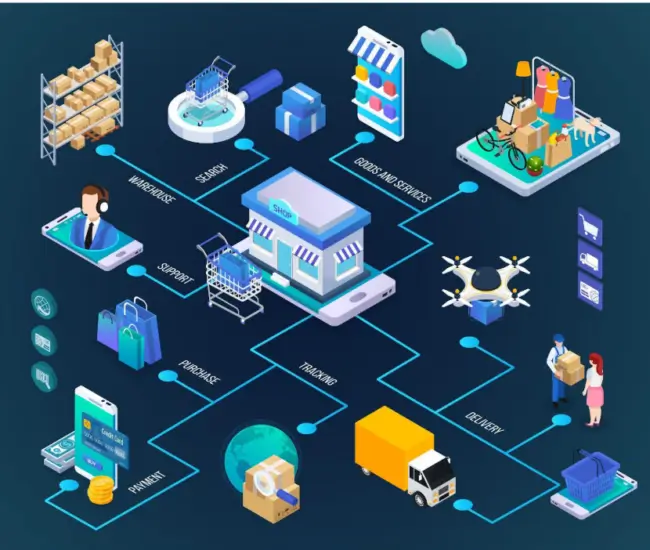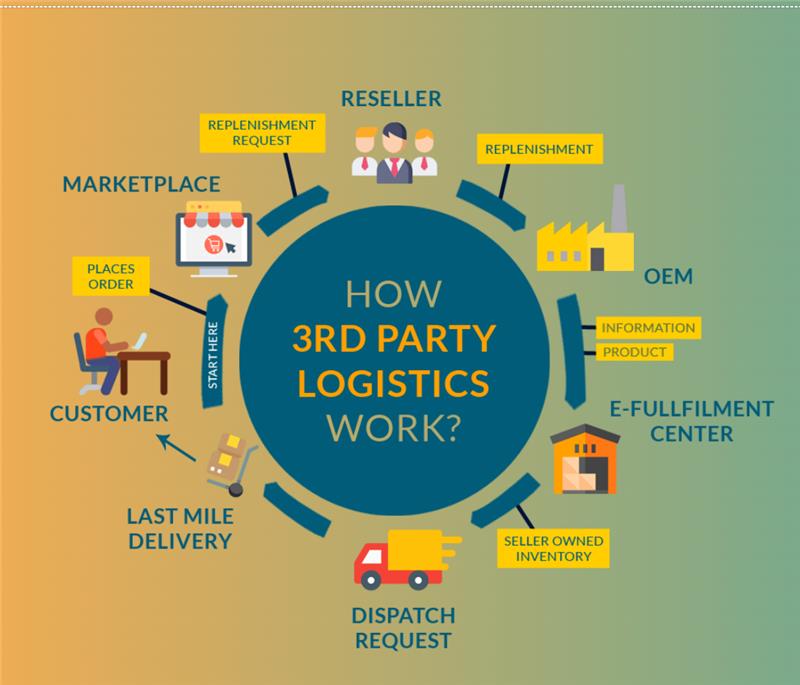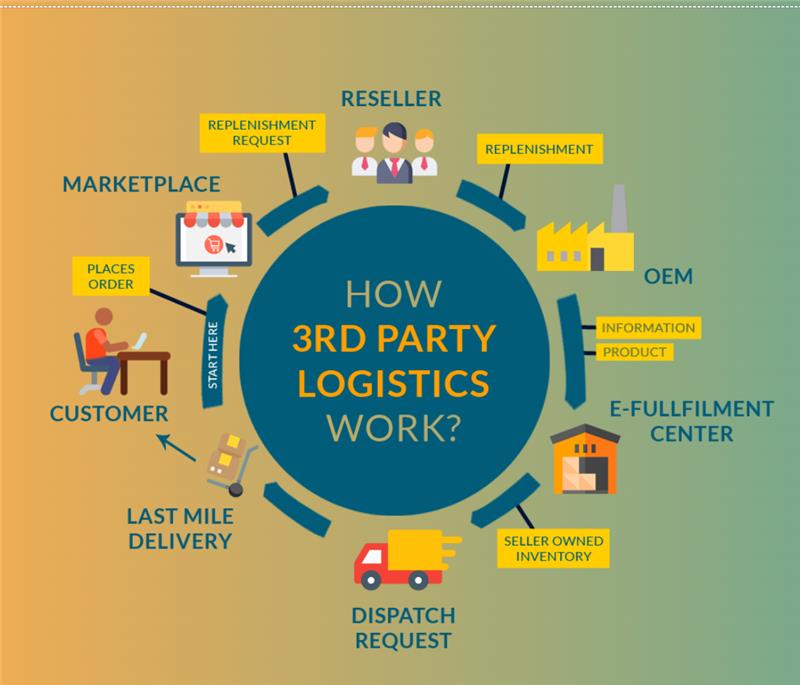
Five AI-powered Automations that Improve eCommerce Operational Efficiency
Artificial Intelligence and Machine Learning have delivered great customer experiences by enhancing various aspects of the eCommerce website, from personalization to customer segmentation for more targeted marketing communication. However, for these customer-oriented features to deliver the expected impact, the backend operations need to match the speed and efficiency of the front end.
This article explores how AI works in the backend to enhance operational efficiency in the various areas of eCommerce operations.

Five Automations that Make eCommerce Backend Operations Efficient
1. Inventory Management with AI
The biggest advantage of eCommerce over retail stores is the ability to stock and ship products from the warehouse without showcasing them at a retail store. It enables cost-effective retail operations. However, you can benefit from it only if you have extremely efficient inventory management.
Not having enough products in stock at any given time or having more products than required can severely impact eCommerce businesses: the former leads to customer dissatisfaction due to the lack of availability of the products customers are looking for, and the latter costs you sales and profit as excessive, slow-moving goods occupy precious warehouse space, which could otherwise be used to stock more profitable, faster-moving goods.
Managing stock at the right level continuously is crucial to eCommerce success. But it is easier said than done; demand is not always constant and fluctuates due to various external factors. For instance, stationery products are usually in high demand around the beginning of the academic year, and the demand may fall during the holidays.
Understanding these factors, predicting the fluctuations in demand, and adjusting stock levels require extensive analysis of historical data and accurate predictive analysis to forecast changing market trends and other external factors like natural disasters that may impact the sales of certain products. Manually conducted data analysis is often inaccurate and inefficient in forecasting demand based on these factors. It also cannot incorporate an adequate number of data points required to ensure accuracy in predictive analysis, thus reducing the preparedness of your business to tackle those challenges.
Artificial Intelligence makes demand forecasting accurate and ensures operational efficiency by:
- Using machine learning algorithms to conduct predictive analysis
- Analyzing historical sales data and external factors to come up with accurate demand forecasting
- Enhancing your preparedness to tackle external challenges and manage demand spikes
- Optimizing inventory management by automating stock levels
- Preventing overstocking and stock-out by constantly learning from historical data, current developments, and accurate demand forecasting
- Increasing operational efficiency and accuracy in warehouse operations by improving order processing and reducing human error through automation
2. AI-Powered Customer Service
Online retail does not usually allow customers to experience the products firsthand. As a result, customers placing orders for unsuitable products by mistake, returning them, demanding refunds, and contacting the business to clarify product features and functionality before and after the purchase are all inseparable components of the online shopping experience. So, if customers cannot reach out to eCommerce businesses instantly, it will severely impact the customer experience and trust in those businesses.
Customer service with human intervention demands massive amounts of human resources and infrastructure. Even with all that, it comes with poor operational efficiency and human errors that lead to loss of customer satisfaction. AI addresses this problem by bringing automation to customer service.
Unlike primitive chatbots that pack limited functionality and pre-programmed responses, the latest generation AI chatbots have automated customer service and enabled intelligent, personalized, and context-based responses, simulating human conversations using Natural Language Processing and other AI technologies.
They make responses more relevant by proactively accessing the customer’s purchase data and search history. Using machine learning algorithms, they also learn their preferences and interests to simulate a digital salesperson and recommend the most suitable products, improving customer experience and sales conversion.
Chatbots and virtual assistants powered by AI improve operational efficiency and give eCommerce businesses an advantage by:
- Offering round-the-clock support to customers
- Leveraging Natural Language Processing (NLP) to provide context-based, human-like responses to customer queries
- Handling queries and implementing mundane tasks like order cancellation and refund requests
- Offering intelligent, proactive assistance to customers through their shopping experience
- Using machine learning algorithms to learn customer preferences and recommend the most suitable products, simulating a salesperson
- Assisting with order tracking
- Reducing the workload for customer service personnel and allowing them to focus on resolving more complex inquiries and issues for the customers
- Providing instant responses without wait times
- Improving customer satisfaction and enhancing the overall customer experience
3. Predictive Analytics for Supply Chain Management
Supply chain management is the lifeline of eCommerce and the economy in general. Hiccups in the supply chain can bring the economy and society to a grinding halt.
The unexpected fluctuations in demand during the pandemic caused a chip shortage and created a domino effect that affected various sectors. It constantly reminds us of the extent of impact caused by supply chain issues and the perils of not foreseeing potential problems and proactively taking preventive measures to avoid supply chain disruptions. These supply chain disruptions can affect eCommerce more than any other sector because success in eCommerce is determined by supply chain efficiency and agility, intelligent demand forecasting, and robust logistics networks. So, optimizing the supply chain is indispensable for eCommerce success.
Predictive analytics driven by AI optimizes supply chain operations. By analyzing real-time and historical data, businesses can accurately forecast demand, identify bottlenecks, and proactively manage supply chain disruptions. AI algorithms optimize delivery routes, reduce transportation costs, and ensure timely product restocking, ultimately boosting operational efficiency in the supply chain.
AI-driven systems also streamline operations by creating real-time data visibility across the supply chain and connecting eCommerce businesses, suppliers of critical components, third-party vendors, and logistics partners for better operational efficiency across the supply chain.
4. Automated Review Filtering
Apart from the product literature, product descriptions, images, and other visual elements that help customers examine the product and its features, customer review is one of the most critical components that helps customers understand and trust the product.
However, in many cases, the reviews may not be genuine or helpful for other customers to understand the product. Fake reviews distort the perception of products and brands, affecting sales and brand reputation. So, it is indispensable for eCommerce businesses to identify fake reviews and remove them from the product page.
Manually vetting every review and deleting fake reviews can be time-consuming and labor-intensive, especially when the reviews are scattered across platforms. AI-based review-filtering systems improve the operational efficiency of review filtering by:
- Automating the labor-intensive and time-consuming process of moderating reviews
- Safeguarding eCommerce platforms from fake reviews through proactive measures
- Identifying suspicious patterns
- Flagging reviews influenced by review bombing
- Hiding/deleting customer reviews that are not genuine
- Maintaining the integrity of the review system
5. Automated Data Management and Analysis
eCommerce businesses function by collecting data, conducting extensive data analysis, and making sound business decisions based on inferences from data and their interpretations. Data-driven operations extend to various aspects of the business, including demand and sales forecasting, inventory management, marketing strategy, etc. eCommerce websites collect vast data sets related to all these areas of business operations.
It is virtually impossible to manually enter data, verify data integrity, review and remove duplicate entries, categorize them, and analyze them by comparing and combining various data points to make inferences. AI-powered data analytics tools automate all these processes and come up with far more accurate predictions and insights by incorporating more data points and processing more data sets than humans possibly can on a daily basis.
AI systems improve operational efficiency in data collection and analysis by:
- Automating data entry, verifying data, eliminating duplicates, and cleansing data
- Streamlining customer data management
- Enabling quick and timely decision-making
- Integrating with other business systems to create real-time data visibility across the organization and offering better insights that improve efficiency at every level
- Using machine learning algorithms to learn about customers and create more accurate and logical customer segments for more targeted and personalized sales and marketing
- Enabling predictive analysis to read historical data and other external factors to anticipate changes in customer preferences and market trends
- Helping eCommerce businesses to prepare for the changes proactively and stay ahead of the competition
AI: A Key Factor Behind the Increase in Operational Efficiency in eCommerce
Automating eCommerce backend operations using AI technologies fosters operational efficiency, enhances customer service, and optimizes inventory management. With machine learning algorithms and predictive analytics, eCommerce businesses can reduce costs, improve demand forecasting, and elevate customer experiences, positioning themselves to thrive in the ever-evolving eCommerce landscape.
FAQs
1. What kind of automation can AI support with my ecommerce business?
AI can automate tasks like inventory management, demand forecasting, customer service via chatbots, and personalized marketing. It streamlines order processing, reduces human error, and optimizes supply chain management, enhancing operational efficiency and improving the overall customer experience in your eCommerce business.
2. How does AI support better logistics processes?
AI enhances logistics by optimizing delivery routes, predicting the maintenance needs of vehicles, and managing warehouse operations. With predictive analytics, AI improves demand forecasting, reduces transportation costs, and ensures timely deliveries, boosting operational efficiency in eCommerce.
3. What is the role of AI in business operations?
AI automates repetitive tasks, analyzes large datasets, and provides insights for decision-making. It optimizes processes, including inventory management, customer service, and supply chain operations, helping businesses reduce costs, enhance efficiency, and improve customer experiences across multiple touchpoints.
4. How can AI enhance business operations?
AI enhances business operations by automating tasks, improving accuracy, and analyzing data for better decision-making.















